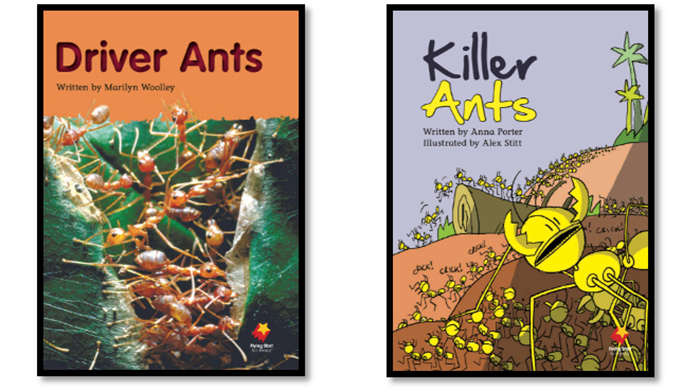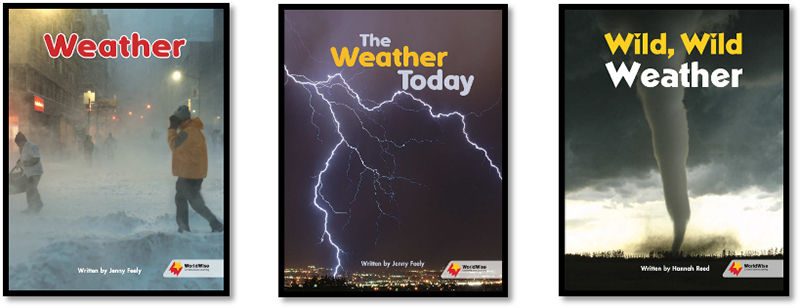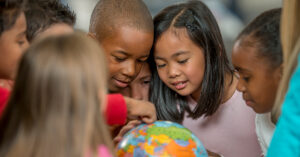How do students develop their vocabulary and knowledge base during the literacy block?
Teachers can intentionally design instructional practices to use during the literacy block to develop reading strategies and build background knowledge and vocabulary simultaneously.
Muons are similar to electrons, but 207 times more massive. They are also unstable: they are created in particle collisions and decay into their lighter cousins shortly afterwards (Castelvecchi, Nature, 2023).
In his article for physicists in the journal Nature, science writer Davide Castelvecchi provided an update on the latest experiments being conducted on the magnetism of muon particles. To make meaning of the short paragraph quoted above, physicists use their knowledge base about particles and how they interact. They also employ subject-specific meanings to words such as ‘unstable’, ‘collisions’, ‘decay’, and ‘cousins’ and connect these meanings to other ideas Castelvecchi explores in his article. Non-physicists (such as this author), however, struggle to do much more than recognize 1.) this sentence is an attempt to activate a bit of background for the reader, and 2.) there are some “common” words with unique meanings in relation to physics. This dramatic example illustrates how background knowledge and vocabulary, or lack thereof, affect meaning-making. Without background knowledge, and its accompanying vocabulary, readers of all ages can struggle to understand what is being communicated.
Literacy learning for young students tends to focus heavily on meaning-making strategies such as inferencing, making connections, and locating specific information within a text. Developing these valuable abilities is necessary for all readers and therefore should not be ignored. However, in addition to these meaning-making processes, readers also need teachers to teach in ways that develop background knowledge and vocabulary, since research shows what a student already knows about the content of a text is a strong indicator of how well they will learn new information found in the text (Marzano, 2004). So how do teachers design instruction for the literacy block to develop students’ thinking-about-text strategies as well as a knowledge base and vocabulary?
Two instructional practices for the literacy block that offer students opportunities to learn meaning-making strategies while also building their background knowledge and vocabulary include using paired texts for small group instruction and supporting students to read widely on a self-selected topic during independent reading practice.
Using paired texts for small group instruction
Nonfiction and fiction texts paired together for teacher-led, small group instruction around similar concepts, ideas, and vocabulary can support students to develop reading strategies, such as making connections and inferences, as well as to develop background knowledge and vocabulary. When teachers select and use paired texts in sequential lessons during small group instruction, students experience the “aha” that comes when they recognize for themselves how two texts are explicitly linked, both for content knowledge and vocabulary. Experiencing firsthand how what we know from reading one text can help us as we read another text is a metacognitive leap for young students!
Paired texts offer teachers an organized and easy way to support readers to make those leaps.

Okapi Educational Publishing’s Flying Start to Literacy™ program uses paired texts along the entire reading continuum to provide students with opportunities to experience firsthand the power of connected texts. For instance, students reading at the Early Fluent Stage encounter a nonfiction text called Driver Ants. This informational report shares several big concepts about these African ants: they live in colonies in underground nests; they hunt, kill, and eat other animals; they make a terrifying sound as their insect army swarms across the jungle; and other animals, including people, panic and flee from these ants. Conceptual language and academic terms are introduced in the nonfiction text.
Students discover these same ideas, language, and vocabulary embedded in the paired fiction text. In Killer Ants, the fiction text in the pair, the ideas introduced in the nonfiction text are central to the storyline. This story opens with animals and people running away from the advancing army of ants. Soon, readers meet a mother gorilla doing something completely different; she is running toward the ants. Readers soon discover her baby, too young to be aware of the danger posed by the driver ants, has been left behind and the mother is running to rescue the baby. Students use background knowledge and vocabulary gained from reading the nonfiction text to infer the motivation behind the characters’ fear and panic in the story and to anticipate the story’s events and outcome (the rescue is successful!). Similar vocabulary appears in both texts—jungle, march, marched, marching, terrified, terrifying, army, panic, nests, gorillas—providing developing readers with necessary repetition of conceptual language and academic terms. In this way, a teacher can use nonfiction and fiction paired texts to support students to learn how to develop and use background knowledge and vocabulary while also developing each student’s meaning-making strategies.
Read Widely About a Single or Related Topic
Teachers can nurture student interests and curiosities while developing background knowledge and vocabulary by having students read widely on a self-selected topic during independent reading time. Neuman, Kaefer, and Pinkham (2014) urge teachers to provide opportunities for students to read many texts on self-selected topics. Reading widely and talking with others on a topic they are personally invested in and want to learn about simultaneously engages students in the meaning-making process, broadens their understandings about a topic or idea (background knowledge and vocabulary), and improves their abilities to read and discuss more complex texts. These reading- and talking-across-texts experiences support students to “access and synthesize large amounts of information; think collectively, critically, and flexibly, problem solve in novel situations; and communicate with clarity” (Nichols, 2009) while simultaneously increasing their background knowledge and vocabulary.
Using this instructional practice for independent practice, whether the topic is wild animals or weather, outer space or the ocean, students develop depth on the topics of their choosing. Students can work with peers who have similar interests and curiosities to become ‘experts’ on their chosen topic. Through reading widely, and talking with others about what they are learning, students encounter similar ideas and vocabulary shared by authors, yet presented in unique and varied ways.

For example, students interested in learning about extreme weather might begin with the book Weather (Feely, 2020) to learn about the different conditions that allow dangerous types of weather to develop. Next, The Weather Today (Feely, 2019-20) shares how knowledge of weather patterns and conditions is useful so people can prepare for and keep safe in extreme weather events. Wild, Wild Weather (Reed, 2019-20) further explores violent and destructive weather patterns and how they affect people’s lives. Books such as those by Seymour Simon—for example, Hurricanes (2007) and Tornadoes (2001)—offer even more detailed background on two specific examples of extreme weather, continuing this topic exploration.
Reading across these multiple texts on the same, related topic, students deepen their background knowledge. They learn the preceding conditions for a type of weather, details about the weather experience itself, and the aftermath of that particular weather event. In addition, all of these texts use similar content vocabulary related to weather (i.e., precipitation, thermometer, meteorologist) as well as words which may be encountered when reading about other topics (i.e., destructive, extreme, violent). So, reading widely on this topic increases both subject-specific vocabulary and words that transfer across subjects, an added benefit.
Intentionally designing instruction during the literacy block to develop both meaning-making strategies as well as vocabulary and a knowledge base is critical to supporting students to read with depth and breadth.
Use these two instructional practices to build students’ background knowledge and vocabulary. Debra Crouch.

